What Controversy Surrounded Some of the Modern Art That Was Produced?
Manufactures and Features
The Shows That Made Contemporary Art History: Sensation
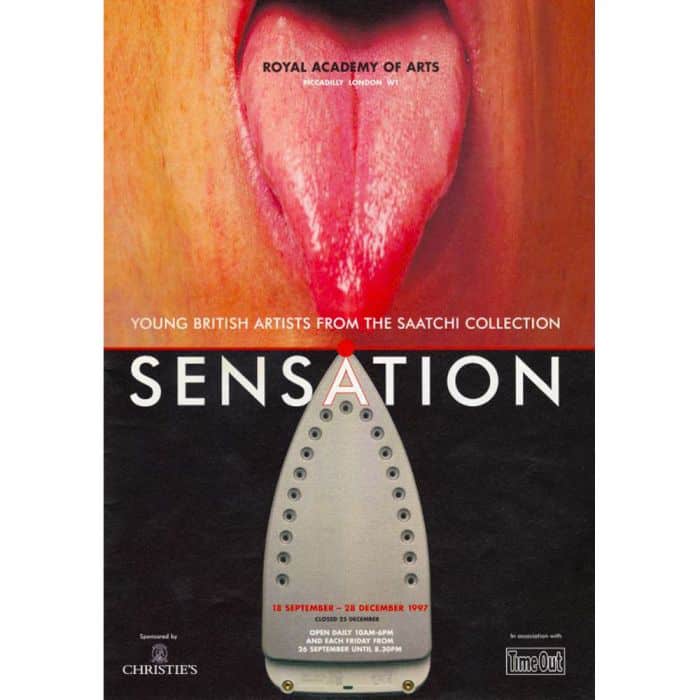
By Shira Wolfe
"There volition be works of art on display in the Sensation exhibition which some people may find distasteful. Parents should exercise their judgment in bringing their children to the exhibition. One gallery volition not be open up to those under the historic period of 18."
Purple University of Arts – Disclaimer for the Sensation exhibition
At that place are multiple means to delve into the fascinating world of gimmicky art. One may consider the evolution and succession of different artistic movements; the personalities of the major players in the field; not to mention the most iconic artworks that have defined our era. But why non consider the history of art exhibitions themselves? Landmark shows of the modernistic and contemporary period have impacted and shaped the class of art history, both launching entirely new genres and shaping the history and habits of exhibition-making through innovative practices.
In 1997, the Royal Academy of Arts in London exhibited Sensation, the controversial art testify with works from the private collection of Charles Saatchi that would launch the careers of a new generation of British artists and bring Young British Art into the public consciousness. From Damien Hirst's iconic formaldehyde shark to Marc Quinn's self-portrait made of his own blood, Sensation would change the shape of contemporary art as people had known information technology.
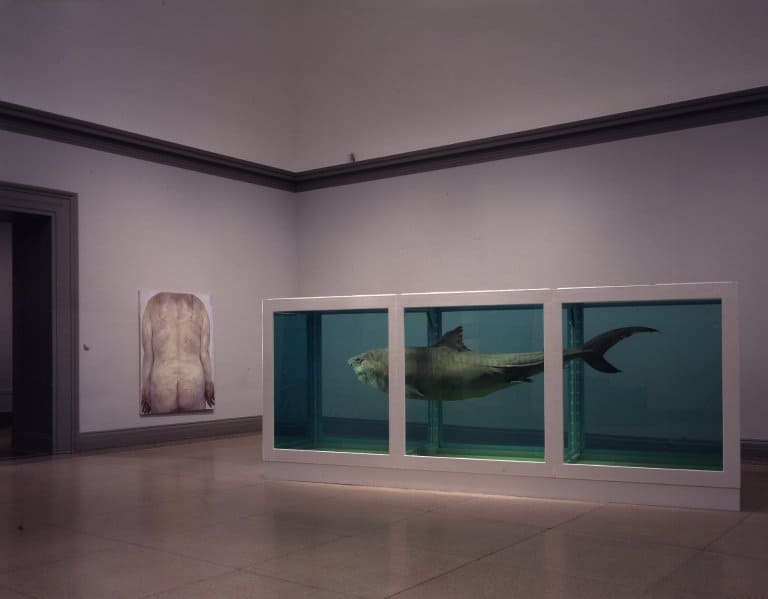
Charles Saatchi and the Young British Artists
After visiting Damien Hirst'southward exhibition Freeze in 1988, and seeing the artist'south start major animal installation, A Thousand Years, art dealer and collector Charles Saatchi ready his sights on the art that was to become known as Immature British Art. He became Hirst's first collector, and an important sponsor for other Young British Artists. From 1992, Saatchi put on a serial of shows called Young British Artists, bringing a great bargain of media coverage to these artists. The Sensation art show at the Royal University was really the bespeak at which the importance of the Young British Artists was solidified. The exhibition attracted around 300.000 visitors, provoked many protests and started a media awareness.
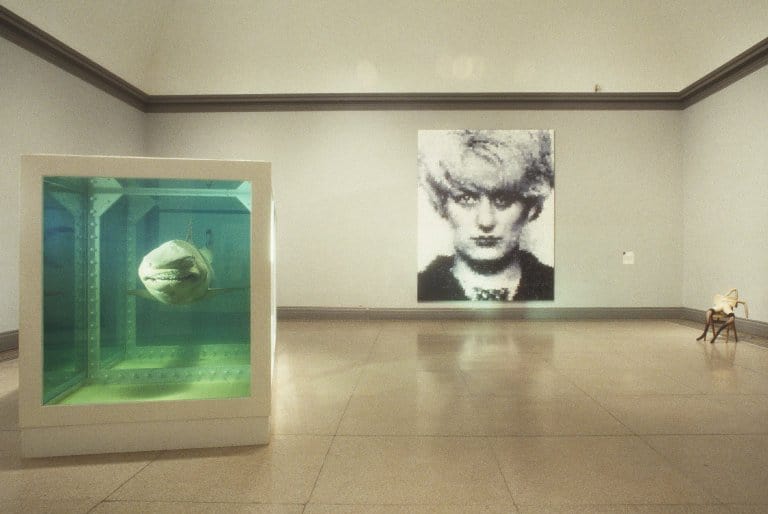
Sensation's Sensational Artworks
The Sensation exhibition included 110 works by 44 different artists, and gave the art earth a stupor the likes of which had not been felt in a long fourth dimension. According to Gregor Muir, author of "Lucky Kunst: The Ascension and Fall of Young British Art": "For better or for worse, Sensation put British art on the map. Nowhere has embraced contemporary art in quite the same way U.k. has. Everyone from cab drivers to politicians was talking near a group of immature artists. It felt like an opening up of fine art. Suddenly it wasn't elitist."
Indeed, information technology seemed similar large audiences were strictly reserved for Sometime Master and Impressionist exhibitions, just Sensation helped make contemporary art more accessible and desirable for the general public. Nearly 300.000 people flocked to see the show, and the exhibition prepared the basis for the opening of Tate Modern 3 years later on in 2000.
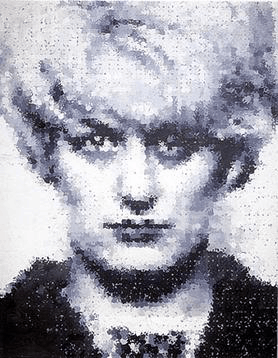
Although the art included in Awareness spanned many different styles and media, what tied them all together was the shock-factor. The biggest media controversy was over Myra, Marcus Harvey'due south image of the serial killer Myra Hindley made upwardly of hundreds of copies of a child's handprint. The Mothers Against Murder and Aggression protest group, accompanied by Winnie Johnson, the mother of one of Hindley'southward victims, picketed the prove and demanded the portrait exist removed. Demonstrators threw ink and eggs at the artwork, and several people working at the Royal University resigned. Despite all this controversy, the painted remained hanging.
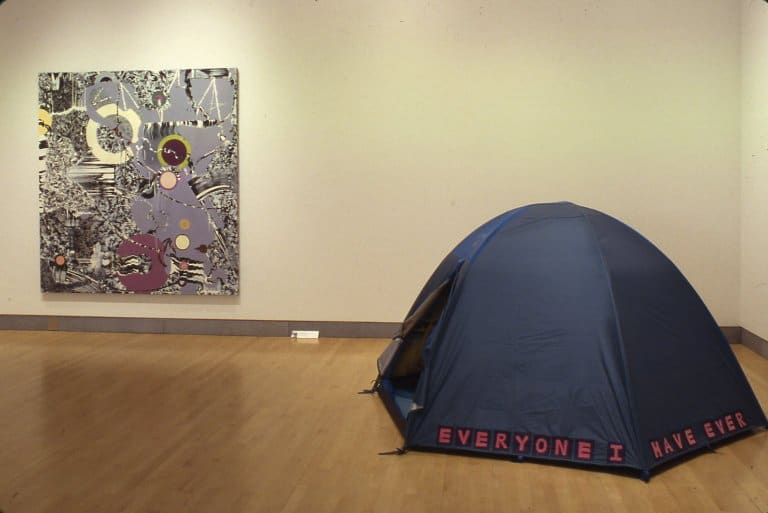
Other notable works included Tracey Emin's tent titled Everyone I Have Ever Slept With, Damien Hirst'southward iconic formaldehyde shark, The Physical Impossibility of Decease in the Mind of Someone Living, and Marc Quinn's Self, a cocky-portrait of the artist created by filling a frozen silicone cast of Quinn's face with ten pints of his ain blood.
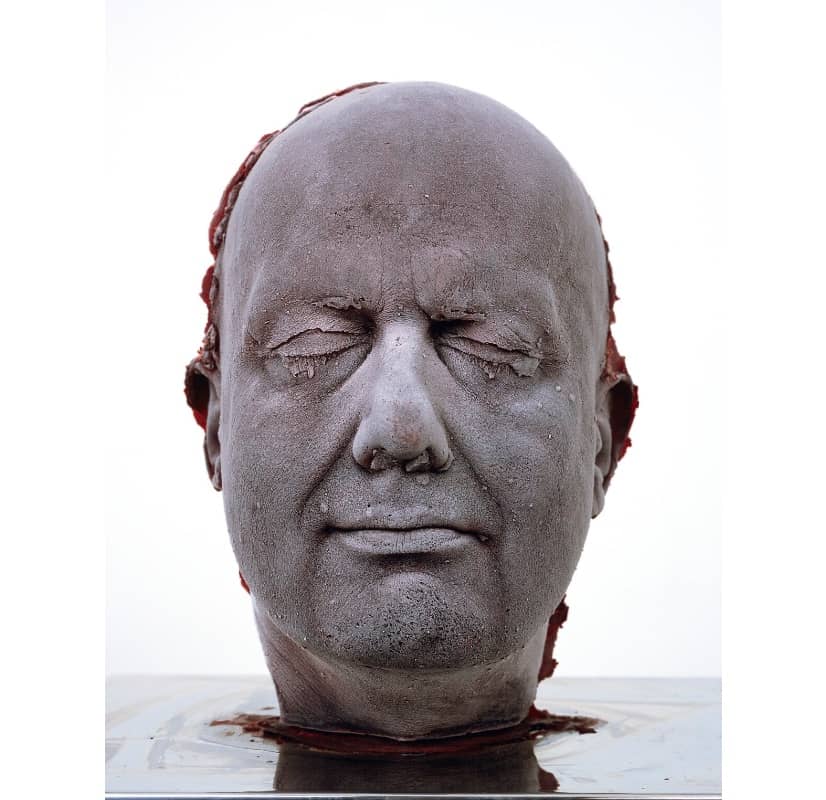
"The contents of this exhibition may cause shock, airsickness, confusion, panic, euphoria and anxiety."
The Brooklyn Museum – Disclaimer for the Sensation exhibition
Sensation in New York
When the show moved on to New York and was shown at the Brooklyn Museum between 1999 and 2000, a piece of work that had non been met with much outrage in London – Chris Ofili's The Holy Virgin Mary – provoked the strongest reaction and was met with instant protests. Ofili's piece depicts a black Madonna decorated with a resin-covered piece of elephant dung, surrounded by collaged images of female person genitalia which supervene upon the cherubim traditionally depicted in paintings of the Madonna. New York Metropolis'due south mayor at the fourth dimension, Rudy Giuliani, saw the work in the bear witness's catalogue and chosen information technology "sick stuff", threatening to withdraw the annual $7 million Urban center Hall grant from the Brooklyn Museum. He stated: "You don't have a right to government subsidy for desecrating somebody else's religion." Funding to the museum was briefly stopped, simply was shortly restored once more following a petition in back up of the museum and its exhibition signed past 100 actors, writers and artists.
On 16 December 1999, a 72-year one-time man was arrested for smearing the Ofili painting with white pigment, after which the museum produced a disclaimer for the exhibition which read: "The contents of this exhibition may cause shock, vomiting, confusion, panic, euphoria and feet." The painting was shown behind a Plexiglass screen from that point onwards, and guarded past a museum attendant and an armed police officer.
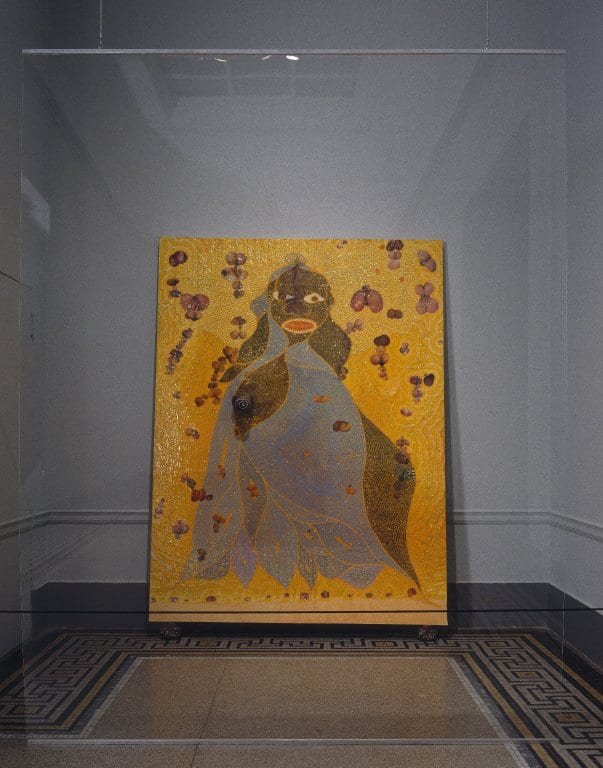
Sensation: recognition and legacy
Today, Awareness is considered to be one of the about meaning exhibitions of contemporary art in the 20th century. It also went down in history as 1 of the almost controversial shows the art world ever saw. The show attracted a tape number of visitors at the fourth dimension, and catapulted the Young British Artists into the mainstream art world, launching many a shining career. The YBAs enjoyed a great deal of publicity, and even used the tabloids as an alternative space to correspond themselves, using all the publicity, expert and bad, to their advantage every bit their names became bigger and more notorious.
Finally, Sensation challenged the boundaries of what can exist considered art, and what is acceptable to exist represented in art. The show paved the mode for other difficult-to-digest gimmicky art to be shown at major art museums around the globe and heralded a new era for British artists.
Relevantsources to learn more than
Royal Academy of Arts
Brooklyn Museum
Damien Hirst website
For previous editions of our series "The Shows That Made Gimmicky Art History", see:
Live in Your Head. When Attitudes Become Form
Primary Structures
This Is Tomorrow
Source: https://magazine.artland.com/shows-that-made-contemporary-art-history-sensation/